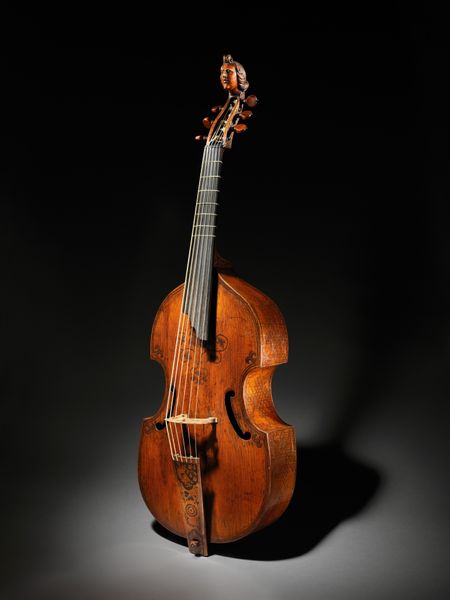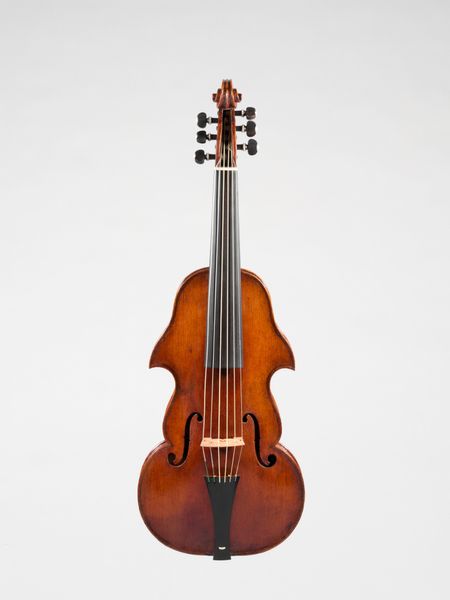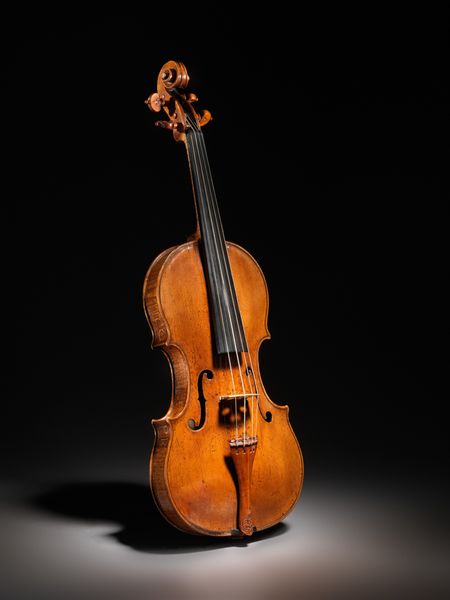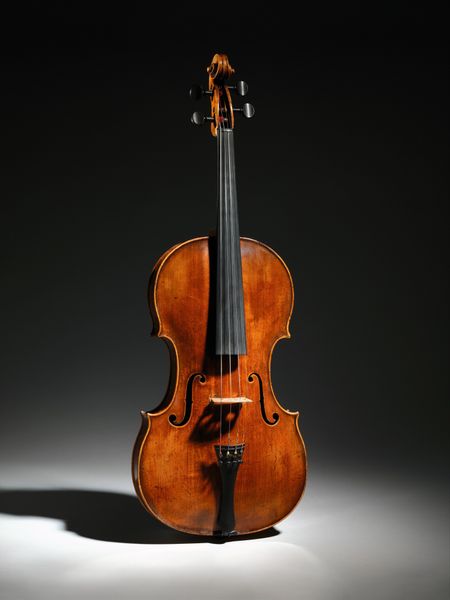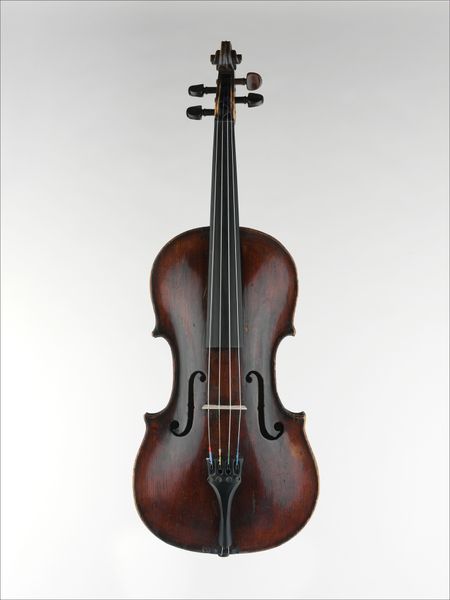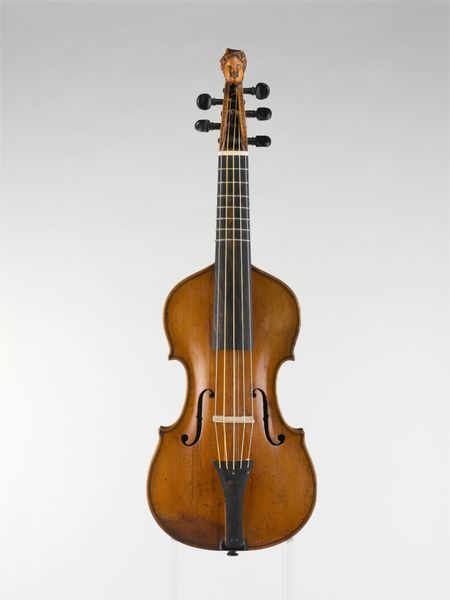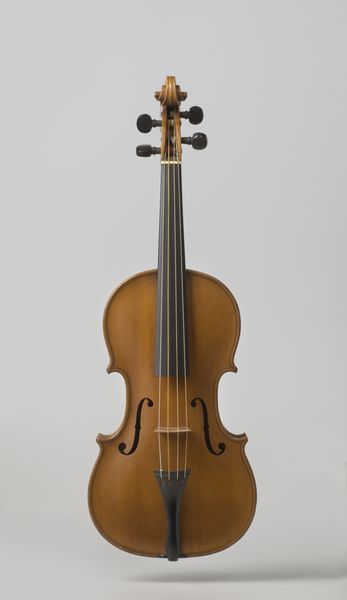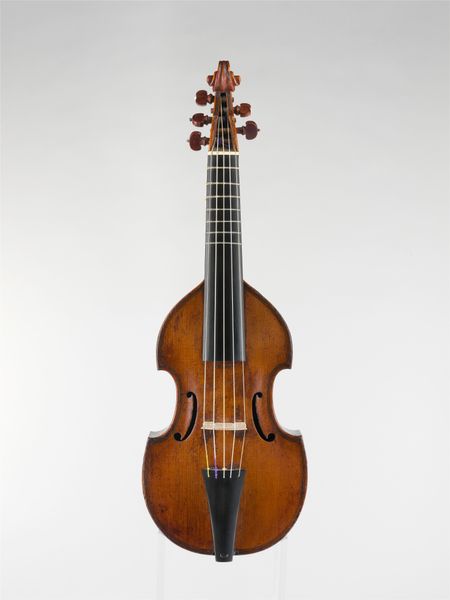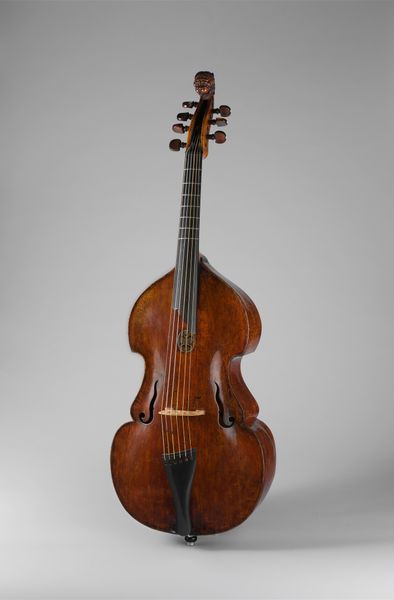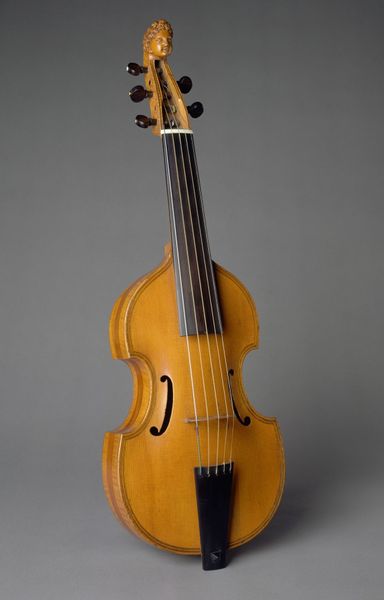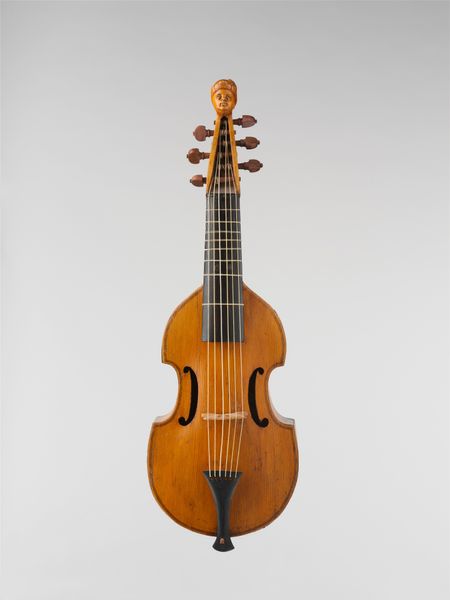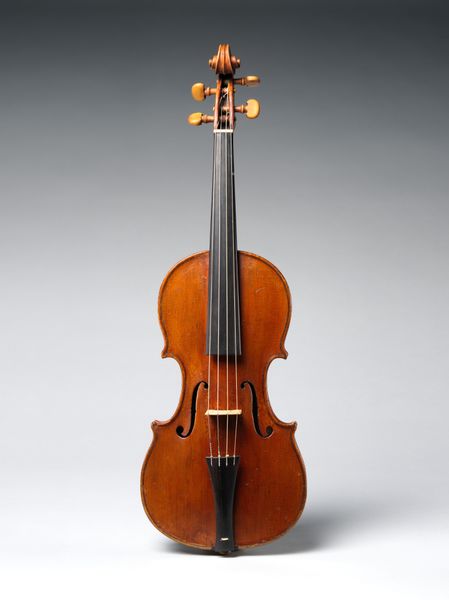
wood
#
baroque
#
wood
#
musical-instrument
Dimensions: 30 × 9 5/8 × 3 1/2 in. (76.2 × 24.4 × 8.9 cm)
Copyright: Public Domain
This Viola d'Amore was crafted by Johannes Florenus Guidantus, a master luthier from the 18th century. It is named so for the symbolic head typically found in the instrument, in this case, a Cupid, an homage to love and desire. Cupid’s image—a figure recognized from antiquity and reborn in the Renaissance—appears as a symbol of irrational and powerful forces. The image transcends beyond a mere representation of romantic love; it's a deeply embedded cultural memory, linking back to ancient rituals of Venus and Eros. The presence of Cupid in Guidantus's viola is not an isolated incident, consider its echoes in Botticelli’s “Birth of Venus,” where Cupid’s arrow incites uncontrollable love. This echoes through time, manifesting as the mischievous god or playful putti in countless works that tap into our collective understanding of love as both a blessing and a curse. It is a cyclical progression, resurfacing and evolving, imbued with new meanings in different contexts.
Comments
No comments
Be the first to comment and join the conversation on the ultimate creative platform.
